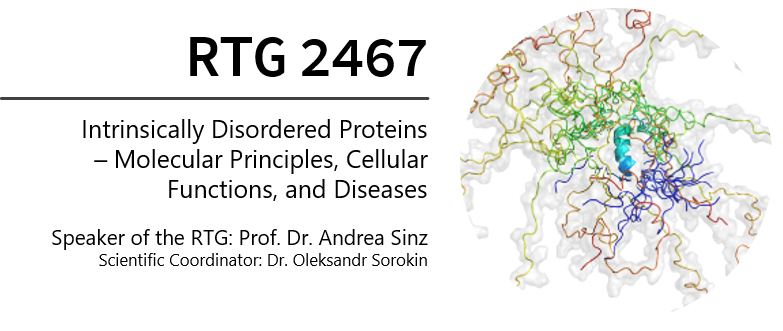
studied Biochemistry at the MLU in Halle where he also obtained his PhD in 2015. Since 2015, he is the scientific coordinator of the RTG 1591 “Posttranscriptional Control of Gene Expression” and since 2016, he is head of an independent junior research group at the Medical Faculty of the MLU. Currently, he conducts research in the field of non-coding RNAs in cardiovascular and neoplastic diseases.
Project within the RTG
The oncogenic role of cyclin L mediated by disordered RS-domains
One of the more unusual transcriptional regulators is cyclin L (CycL). Mammalian genomes contain two copies of this gene (CycL1 and CycL2), both documented to be expressed in most tissues (Berke et al., 2001). In contrast to other members of the cyclin protein family, CycL contains disordered RS-domains (~40% of the total protein length). Accordingly, it was previously shown that CycL localizes to splicing speckles (Berke et al., 2001). Besides this fact, little is known about the molecular role of the protein in (i) splicing regulation and (ii) how this is related to its role in transcription regulation or cell cycle progression. Therefore, we aim to characterize protein and RNA interactions of CycL to elucidate mechanisms that connect splicing regulation to transcriptional regulation. This is especially important, as our recent transcriptome data suggest that CycL might act as an oncogene in clear cell renal cell carcinoma (ccRCC). Identifying novel markers and target proteins is crucial in ccRCC because metastatic ccRCC, in particular, is highly resistant to classical chemotherapy and treatment remains challenging.
Literature references
Loyer, P., Trembley, J. H., Grenet, J. A., Busson, A., Corlu, A., Zhao, W., … & Lahti, J. M. (2008). Characterization of cyclin L1 and L2 interactions with CDK11 and splicing factors: influence of cyclin L isoforms on splice site selection. Journal of Biological Chemistry, 283(12), 7721-7732.
Malumbres, M. (2014). Cyclin-dependent kinases. Genome Biology, 15(6), 1-10.
Zorn, P., Misiak, D., Gekle, M., & Köhn, M. (2021). Identification and initial characterization of POLIII-driven transcripts by msRNA-sequencing. RNA Biology, 18(11), 1807-1817.
